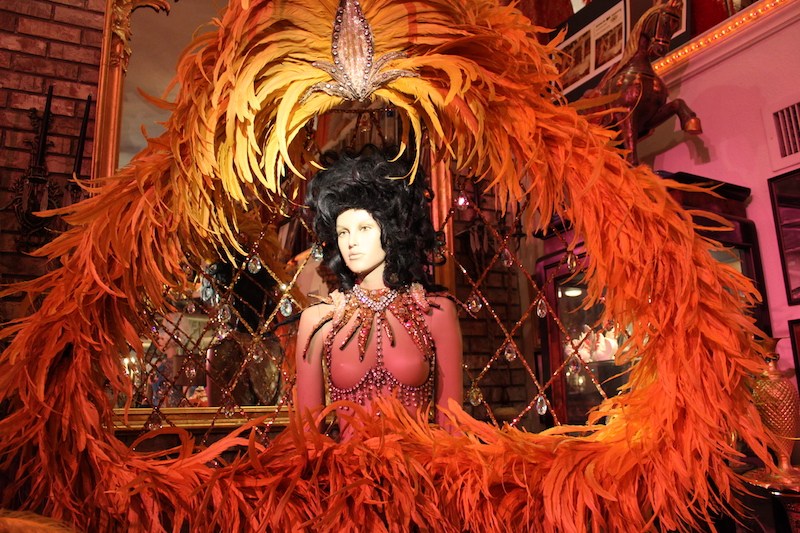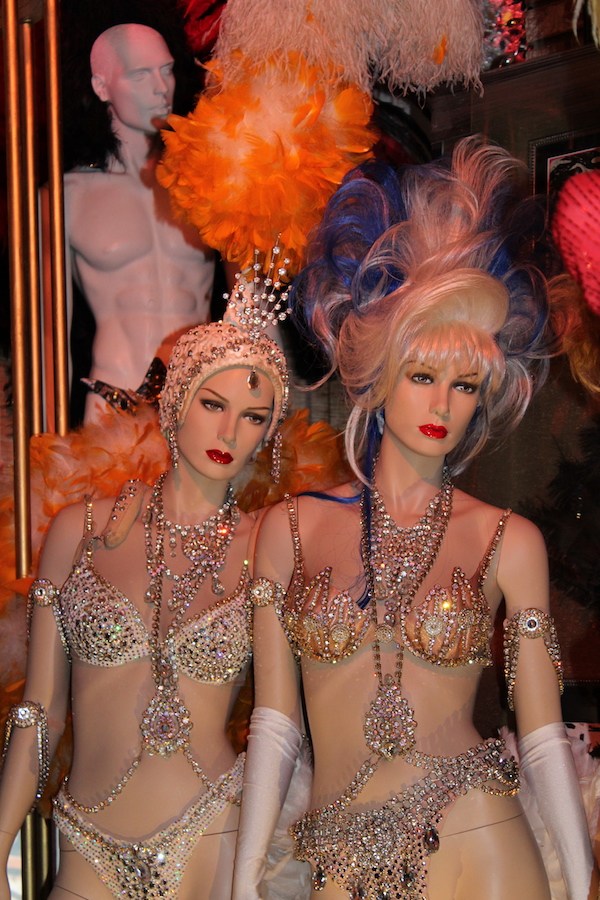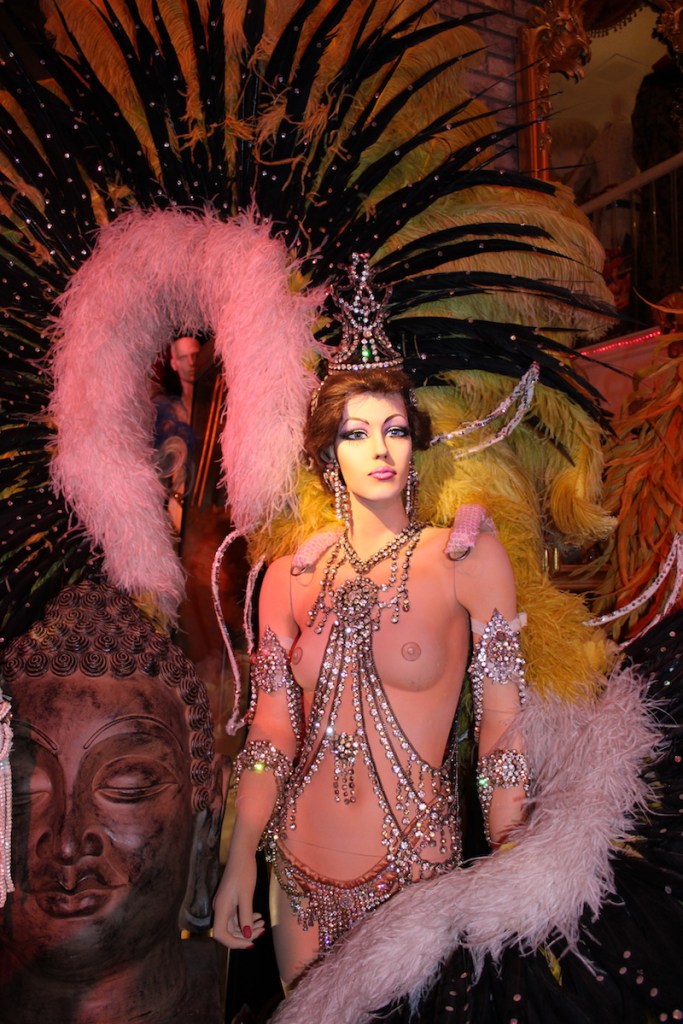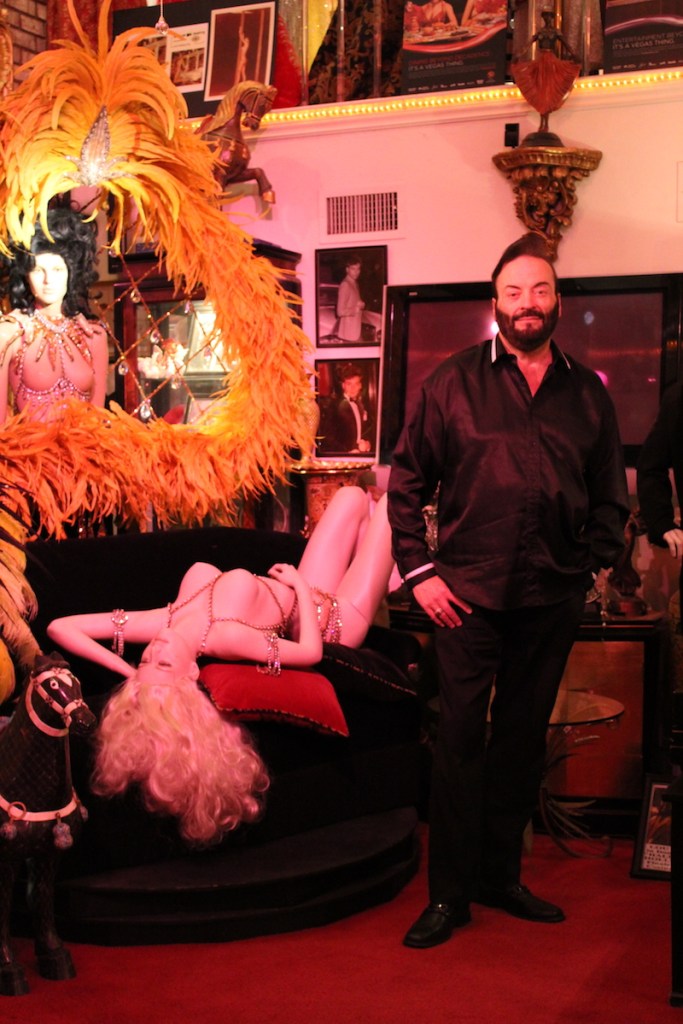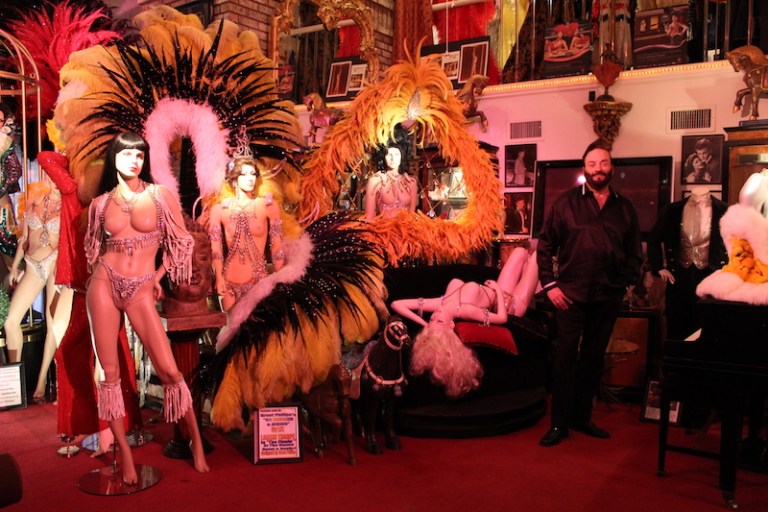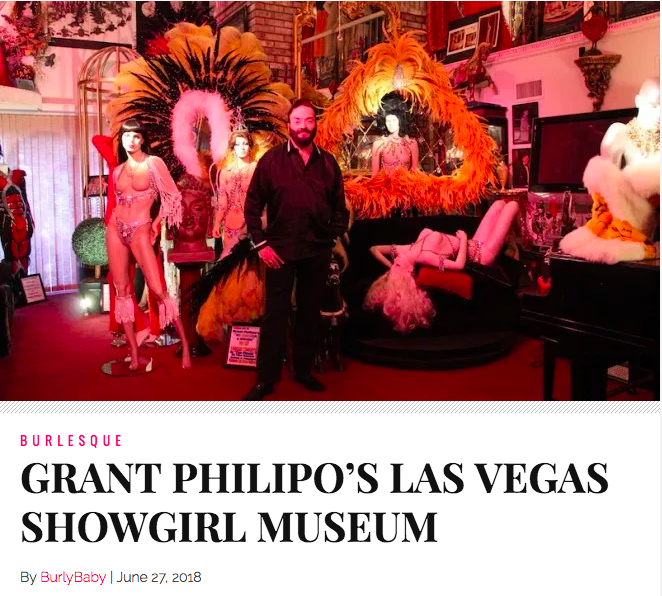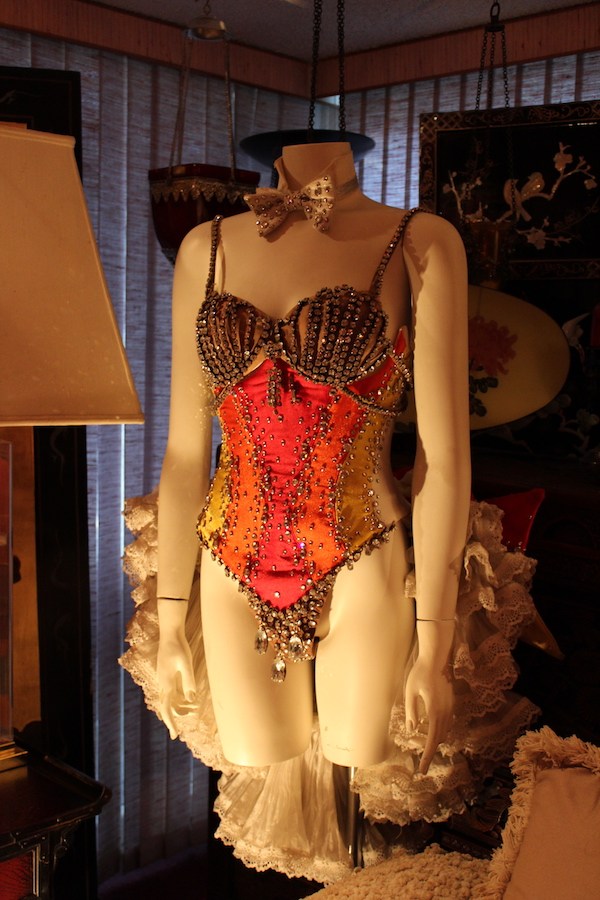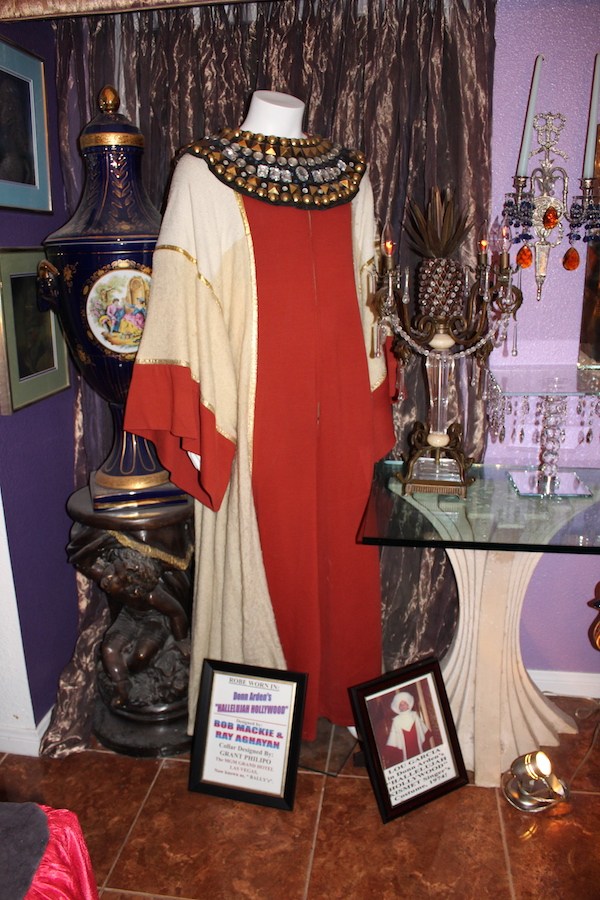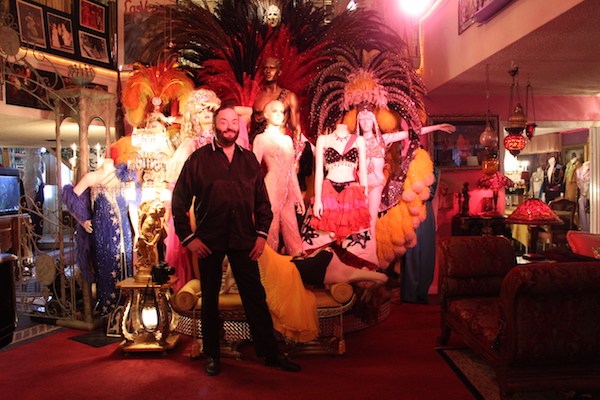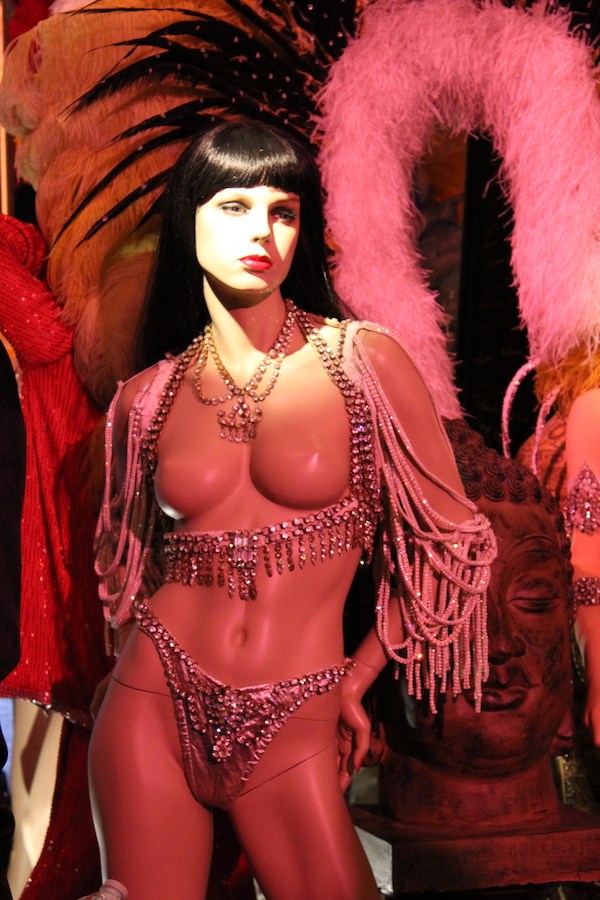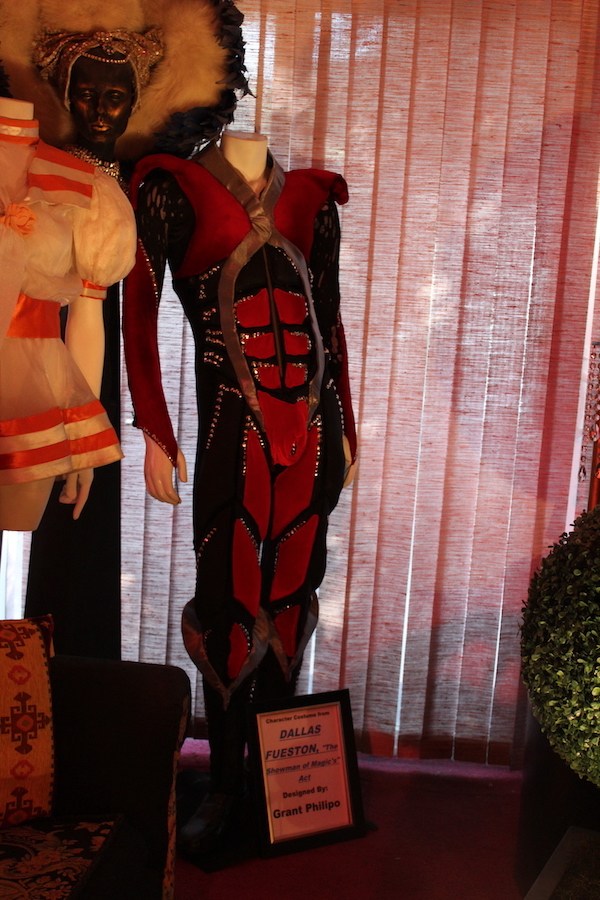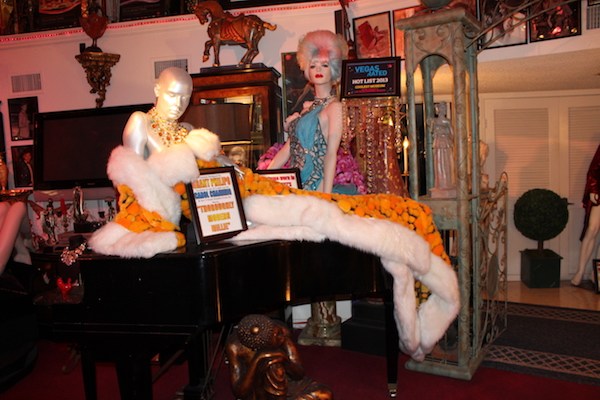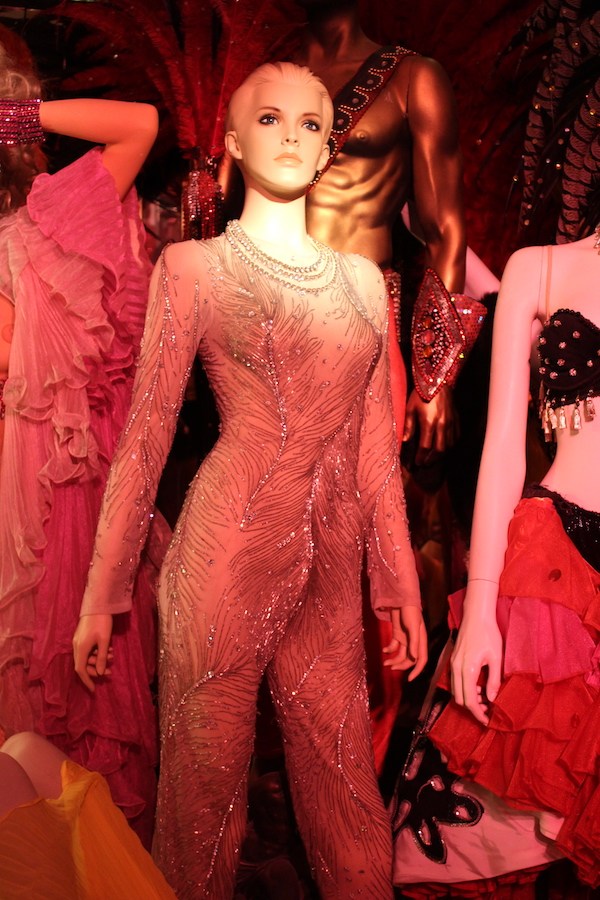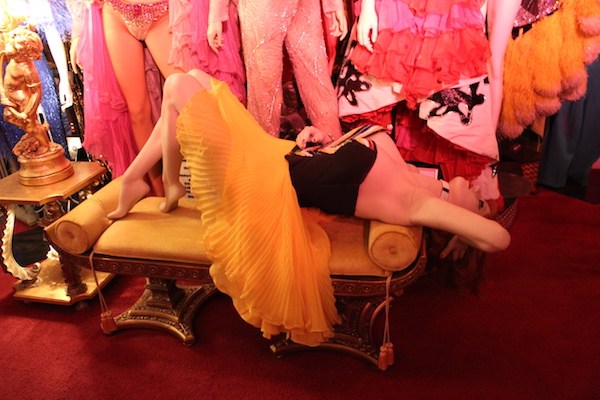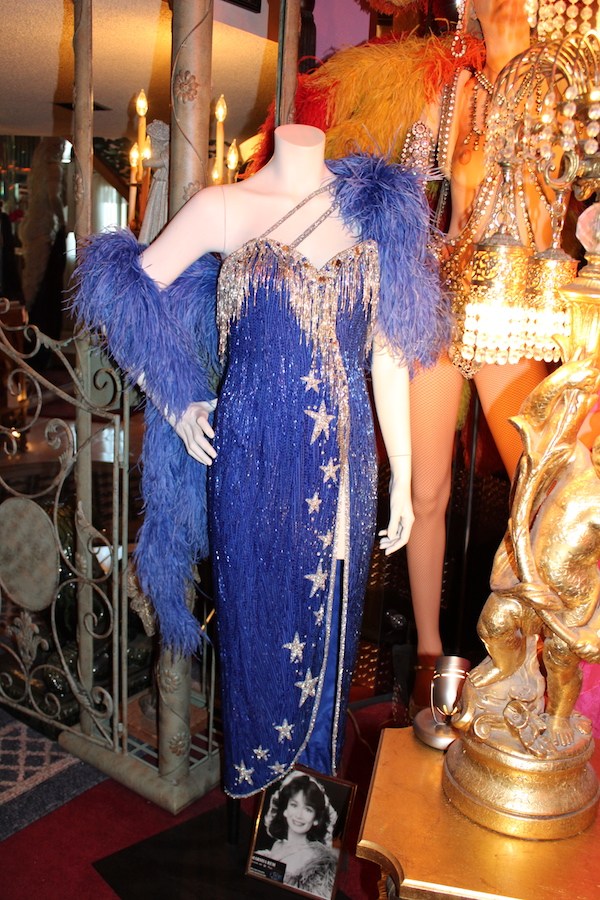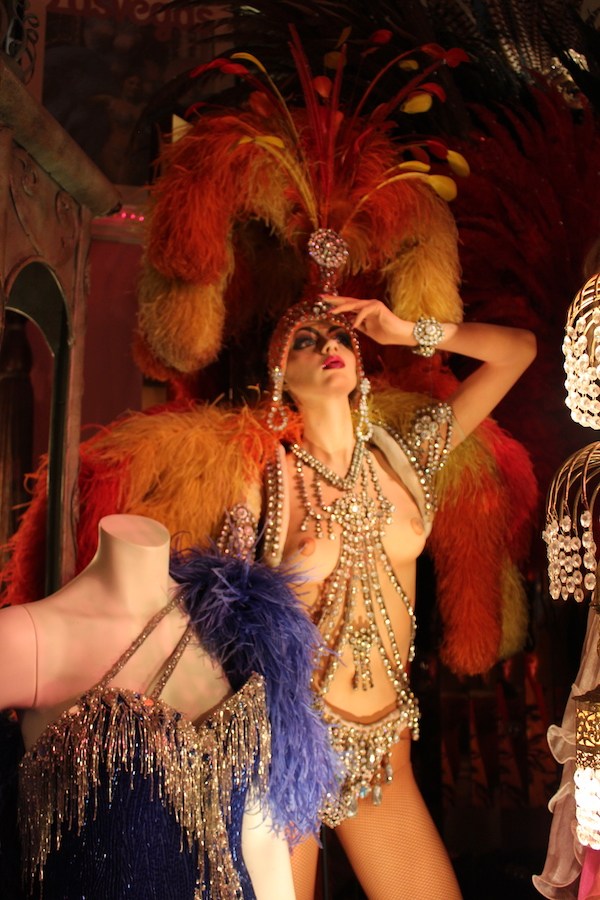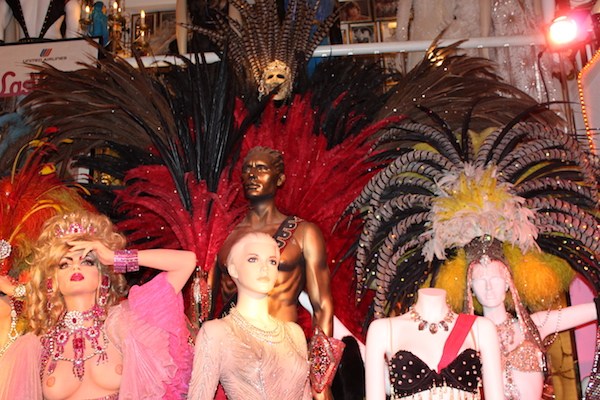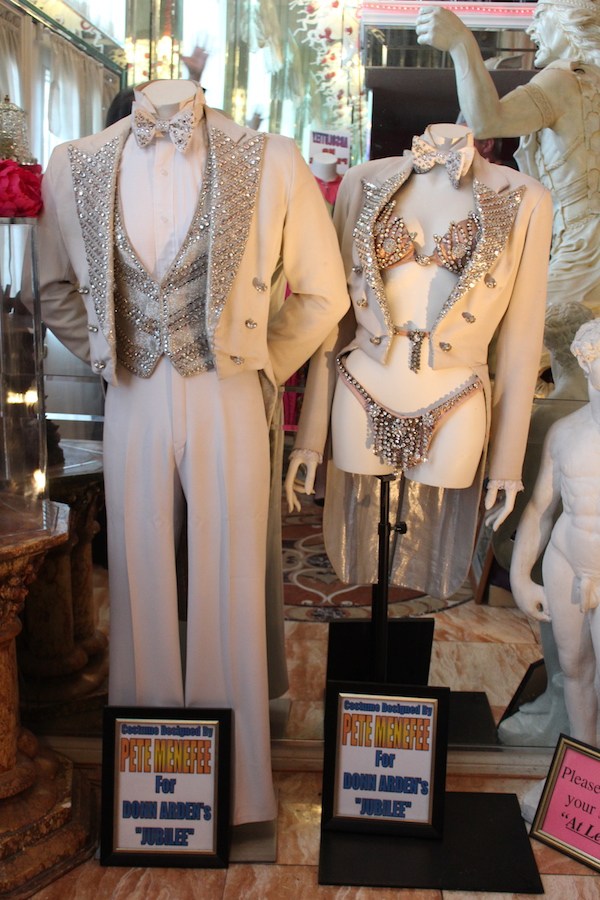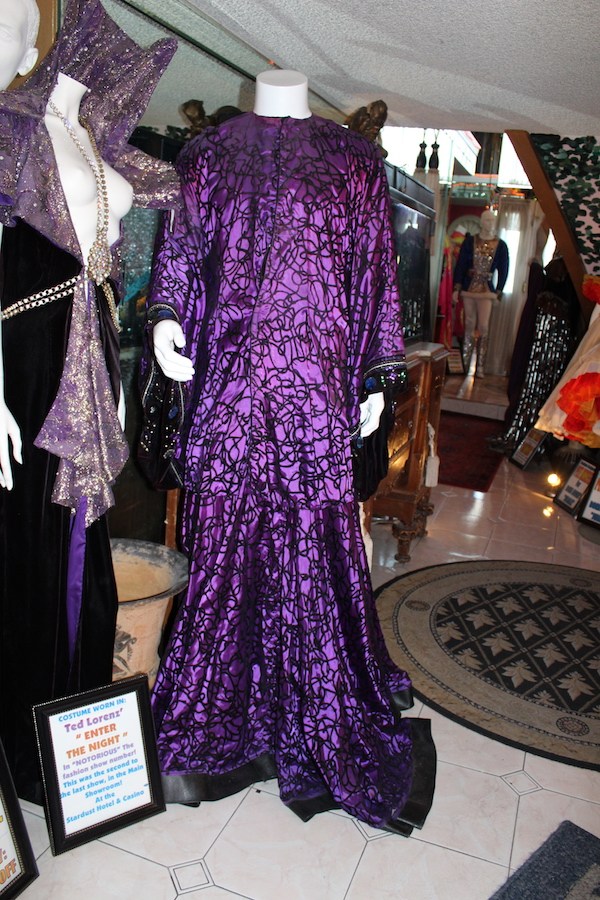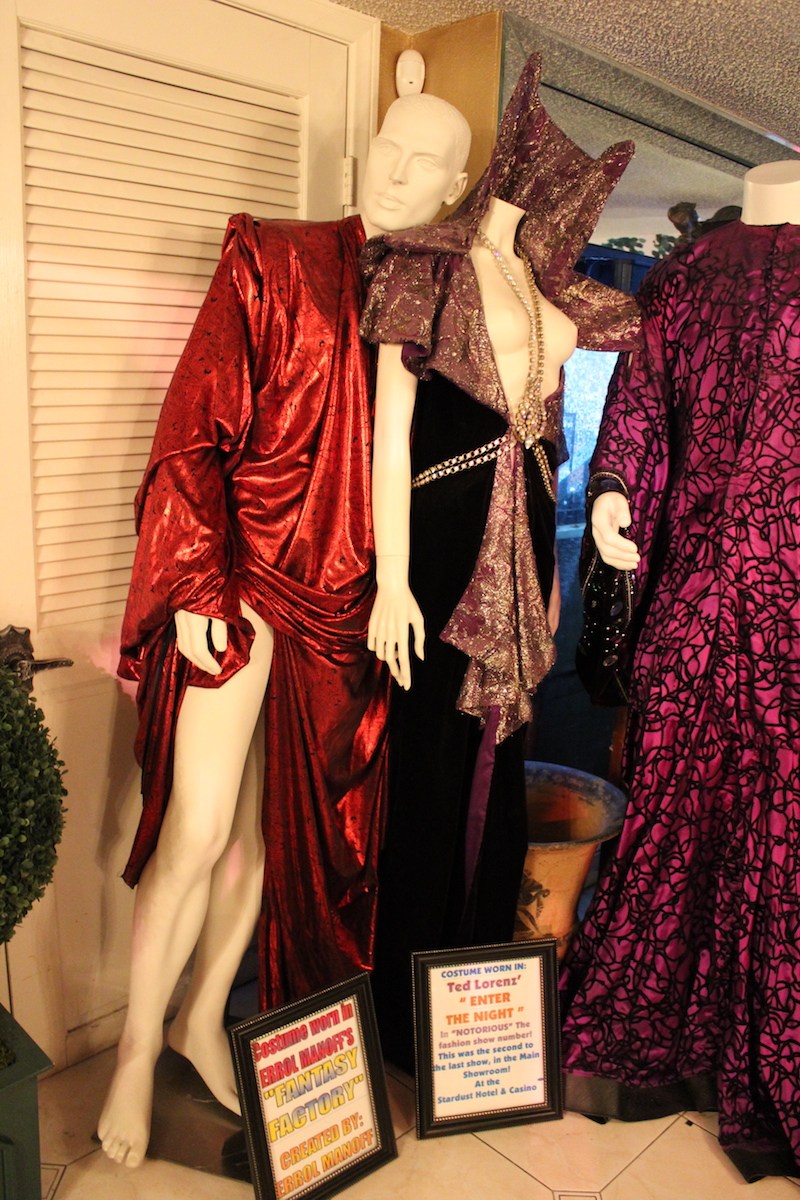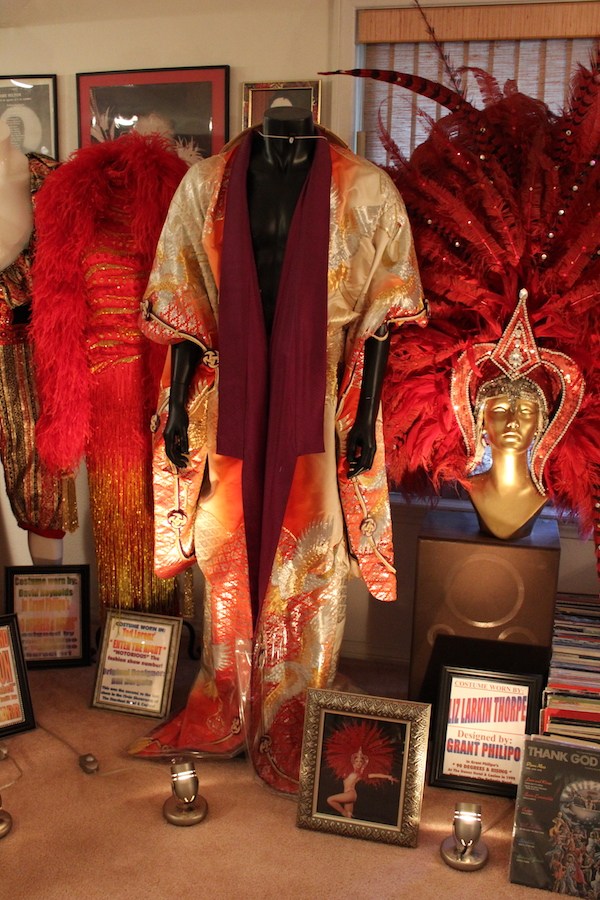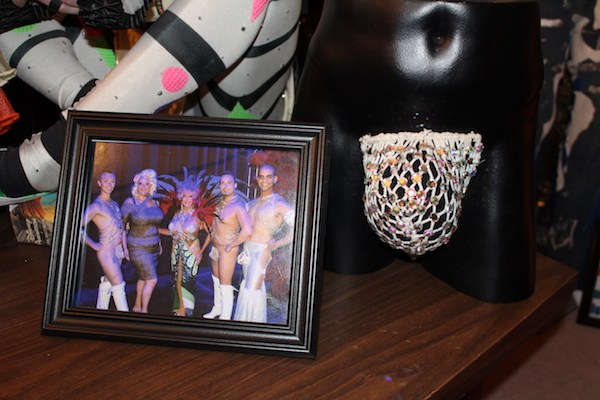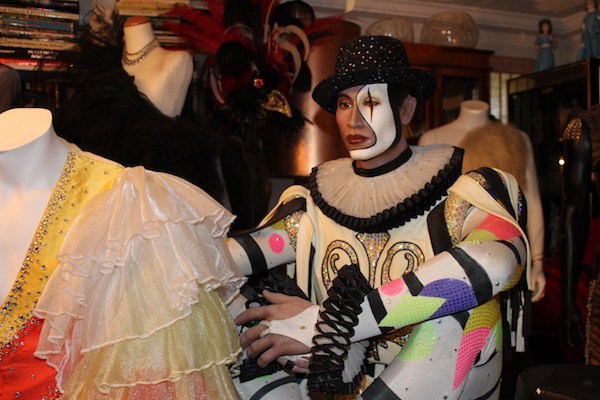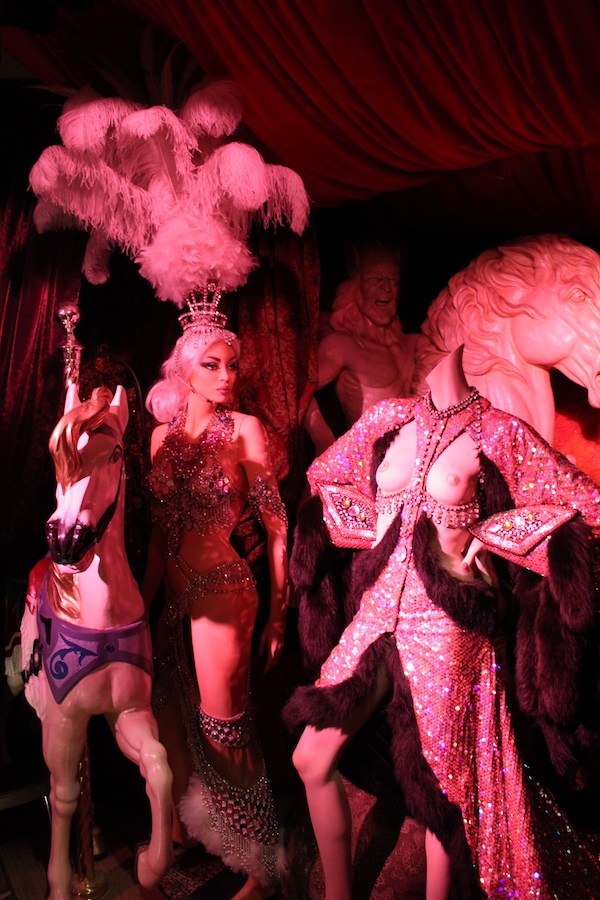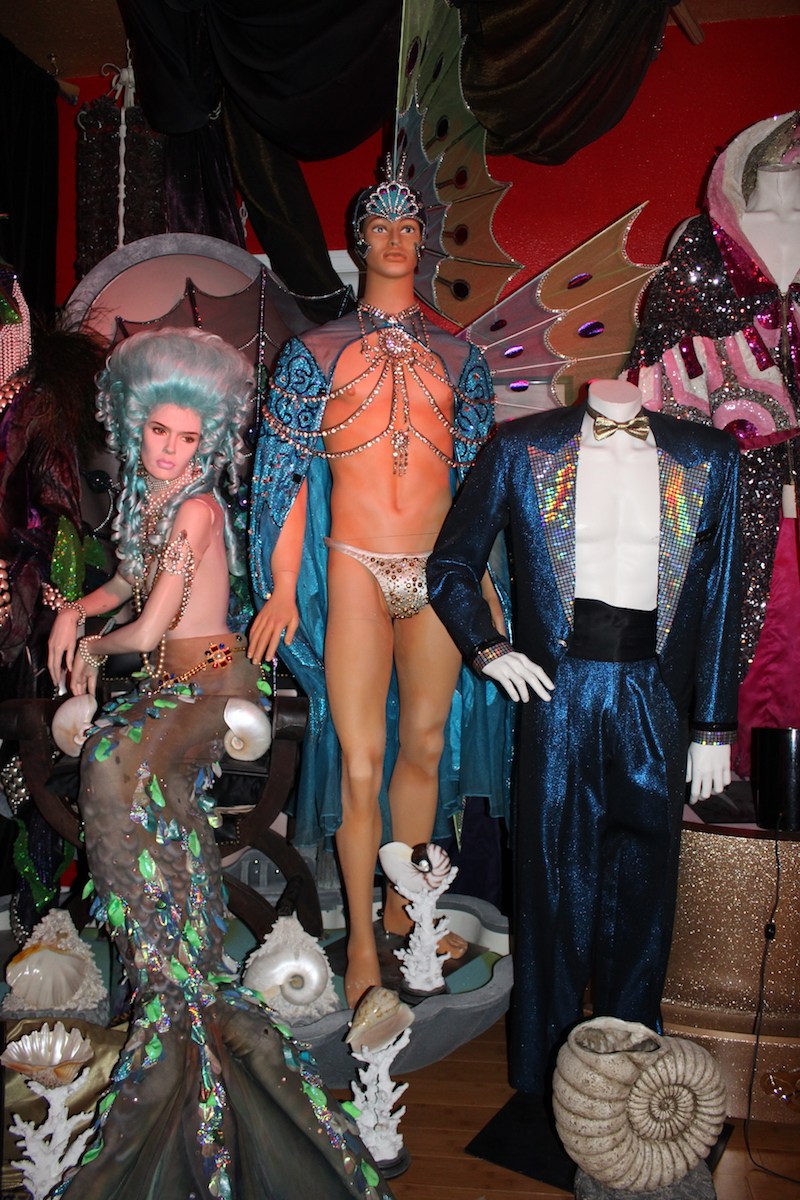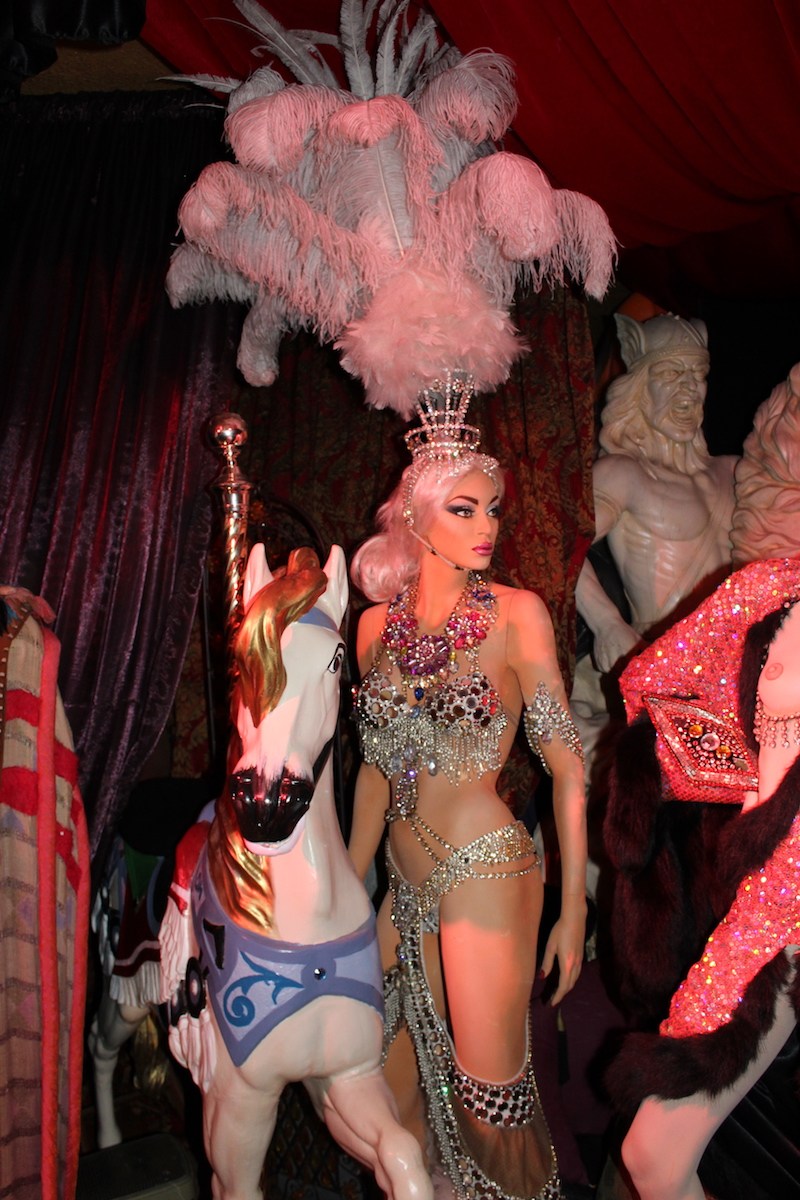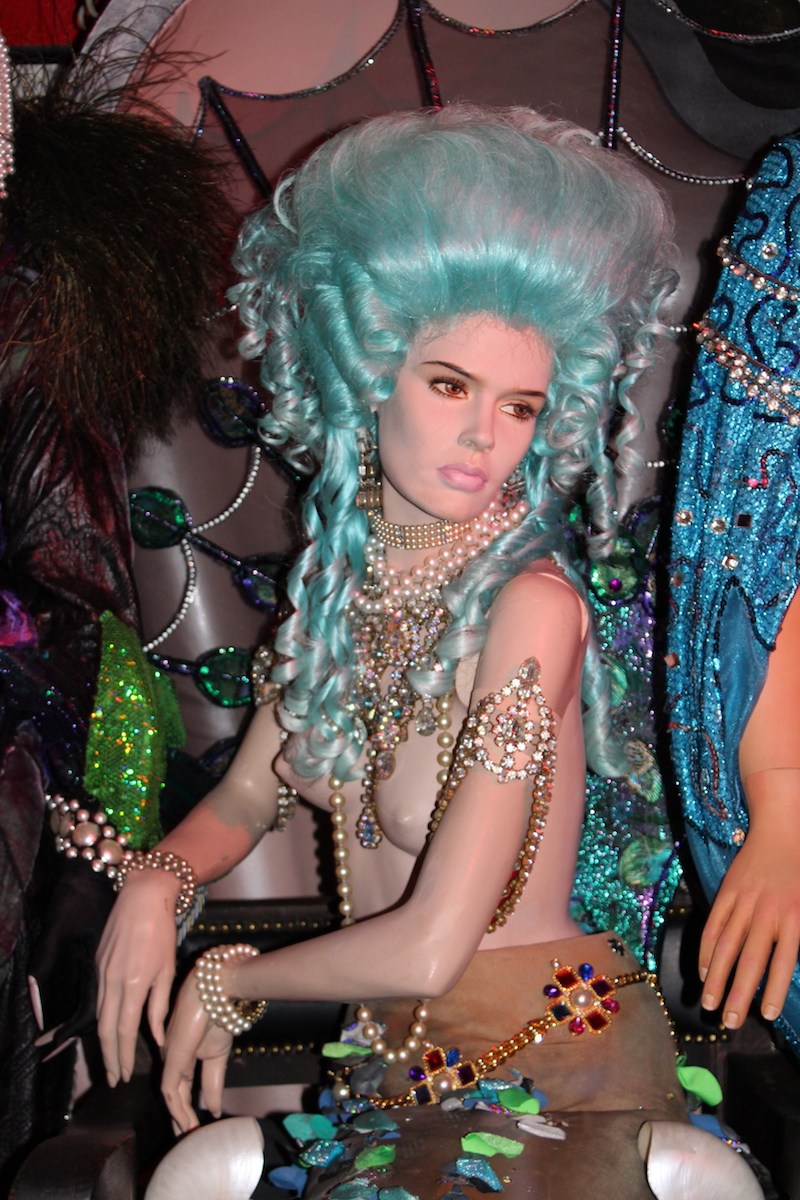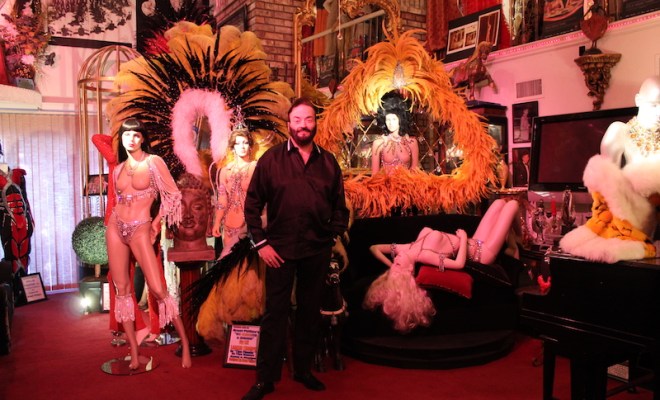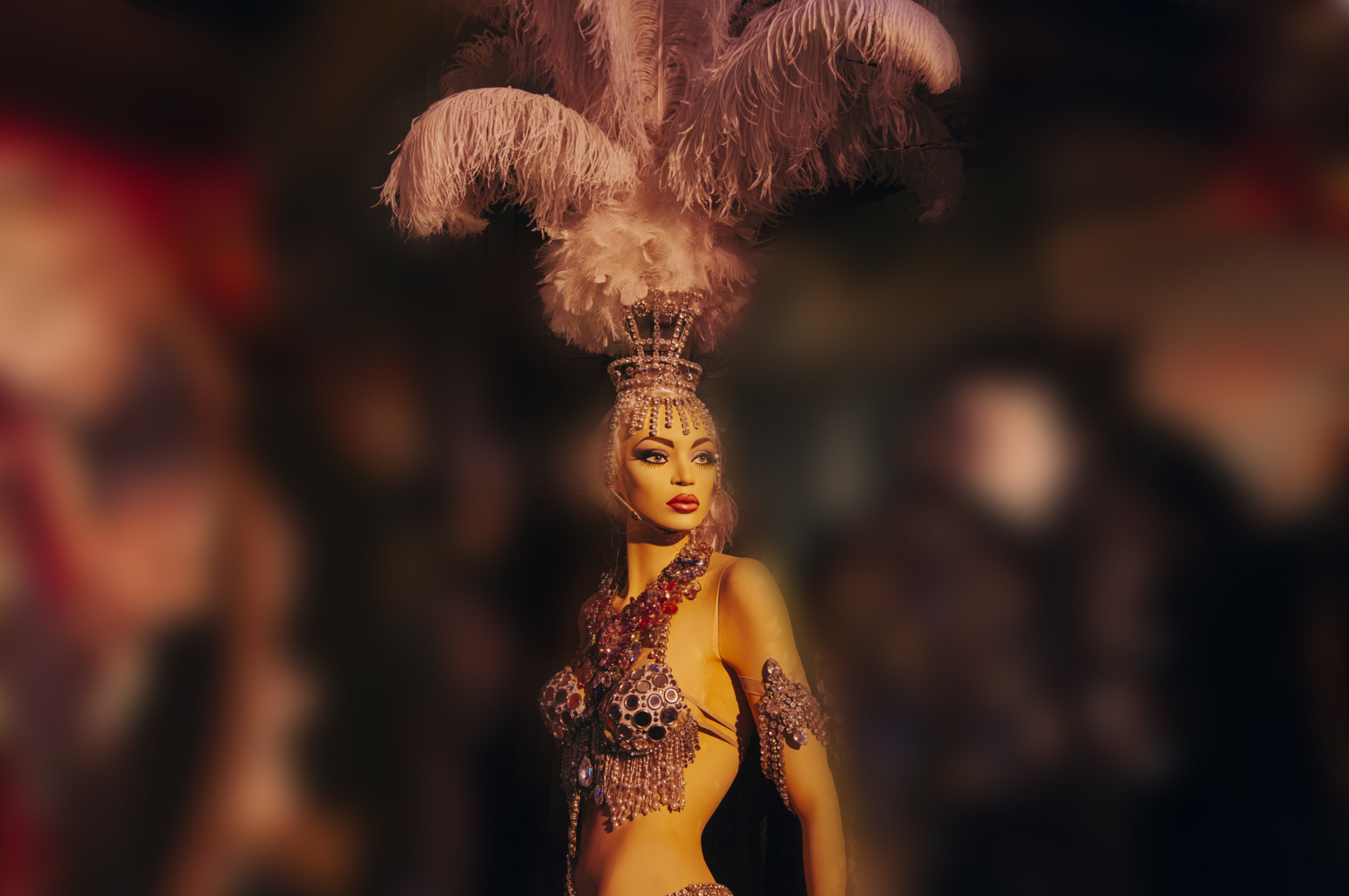(Marvin Joseph/The Washington Post)
Not at all, says former showgirl Greta Jones. “It wasn’t supposed to be sexy,” she says: That was burlesque.
“It was a great living,” Preister says. It paid anywhere from $35,000 to $55,000, depending on a showgirl’s prominence in the production — “which was a lot coming from the ballet world where you basically paid them to [let you] dance.”
Preister sits with Rodriguez, Jones and Brooke Brown, all “Jubilee” alumnae and car-crackup gorgeous, their endless gams crossed just so, in the living room of showgirl evangelist Grant Philipo. He’s a former dancer, a showboy — it was a world of “girls” and “boys” — who transformed his home into a shrine brimming with costumes from a collection of more than 40,000 pieces, a place of ineffable dazzle that could have made Liberace weep.
“These were very classy shows, not girls grinding on your lap,” says Philipo, 60, who danced in the ’70s, when shows still dominated the Strip. He now books showgirls for events.
And these former showgirls work constantly, sometimes three appearances a day, strutting more than dancing. The irony is not lost on them that they earn twice now what they did in “Jubilee” as the living embodiment of a memory.
Even when the shows were topless, they were classy, says “Jubilee” veteran Greta Jones. “It wasn’t supposed to be sexy.” (Marvin Joseph/The Washington Post)
Though she no longer has a show to dance in, Brooke Brown is one of the “Jubilee” showgirls who regularly gets booked for events. (Marvin Joseph/The Washington Post)
Las Vegas specializes in too-big, too-brassy and so-nouveau, but it's also steeped in nostalgia. Is there a newer city in America more intoxicated with its past?
Downtown, the not-so-old “old” section of town, is home to the popular Mob Museum, a trippy splash of vintage neon signs and new hipster dive bars designed to appear midcentury cool. Images of the Rat Pack abound. Elvis is an industry.
Amid all the strident masculinity, showgirls endure as the reigning female image of a time when Vegas was a much smaller, cooler and iconic place. Says Philipo: “The showgirl is the national bird of our state.”
The Vegas showgirl was birthed in the 1950s, when Vegas seemed young. It was imported — like all sophisticated things of the era — from Paris. The idea of a grove of tall, topless women, dripping in crystals, brought exoticism and sophistication to the desert. And offered tourists entertainment they couldn’t enjoy anywhere else in the country.
Casinos used to produce and own their shows. Their revues help define them. The Stardust had “Lido de Paris.” The Dunes had “Casino de Paris.” Then corporations took over — Caesars Entertainment and MGM Resorts International now own half the Strip — and booked headliners like Rod Stewart or Jay Leno, or imported Cirque. Many Vegas acts became indistinguishable from arena shows in any old town.
Produced by Donn Arden, a Vegas extravaganza legend, “Jubilee” cost $10 million when it opened in 1981 — almost $30 million in today’s dollars — and featured 128 performers on a stage 190 feet wide and three-and-a-half stories high.
The classic costumes for showgirls, while not covering much flesh, could still cost in the five figures. (Marvin Joseph/The Washington Post)
“Oh, my God, we had extraordinarily healthy budgets,” says Pete Menefee, who designed the costumes for the show along with Bob Mackie. The costumes were so heavy, and the stair-climbing so demanding, that falls were a given. “They would fine you for looking down,” says Brown. “And if you fell, the first question was ‘Is your costume okay?’ ”
In the 1990s, when the costumes needed to be replaced, Menefee was given a budget of $3 million. He recalls spending $15,000 to $20,000 per girl per number. Pheasant feathers from South Africa cost $36 a plume: “I had 300 of them on the two principals.”
Show titles were nonsense: “Hello Hollywood,” “Hallelujah Hollywood” and, of course, “Hello Hollywood, Hello” (which was staged in Reno and boasted 148 performers and an airplane onstage). Extravaganzas consisted of multiple scenarios — “Titanic,” for example, and “Samson and Delilah” — that had nothing to do with each other. Plot was expendable, as was logic.
“There was a deficit of narrative,” says costume curator Karan Feder, who tends the sumptuous “Folies” collection housed at the Nevada State Museum. “But story wasn’t the point.”
When visitors started to gravitate to newer forms of entertainment, “Jubilee” producers tried everything to try to draw audiences back: new dance moves created by one of Beyoncé’s choreographers; and the world’s largest stripper pole.
It was too late. “Corporations killed it, when they started owning the street,” says Mistinguett, a former dancer who goes by one name only and runs a showgirl booking agency, one of more than a dozen in town. “They didn’t care what was in their theaters.”
Instead, they built bigger hotels and bigger gaming floors, bigger pools, bigger clubs, bigger fountains and bigger malls — more of the same of what was already here, and was already everywhere else. In the sameness, something got lost, the things that made Vegas Vegas.
Instead, there’s “Vegas! The Show,” a revue harking back to better days that squeezes a showgirl tribute into an impersonator mash-up (Sinatra, Tom Jones, Elton John), but only about 10 dancers in all — an amuse-bouche of a spectacular, really. (Philipo is not a fan.)
What will happen in Vegas when the last generation of genuine showgirls is too old to appear in Menefee and Mackie finery, when there’s no one left to uphold the history and represent the tradition that’s been here since the 1950s, when they fade into the sparkling stuff of history and go the way of the Rat Pack and Elvis?
In the spring, three years after the curtain dropped on its final showgirl extravaganza performance, Bally’s Jubilee Theater is scheduled to reopen with a new resident stage show — motocross superstar Travis Pastrana’s “Nitro Circus,” a celebration of the X Games champion’s two-wheeled acrobatics. The venue will be renamed the Nitro Circus Theater.
Philipo, surrounded by his collection, keeps talking to casino executives about putting a line of showgirls into an existing show, five or maybe 10 dancers. “The magic and all the mystery is gone,” he says. “Their history is vitally important.”
Many showgirls understand they already belong to Vegas’s beloved past. Not Philipo. He’s nowhere near ready. He still dreams of Swarovski crystals and feathers.









